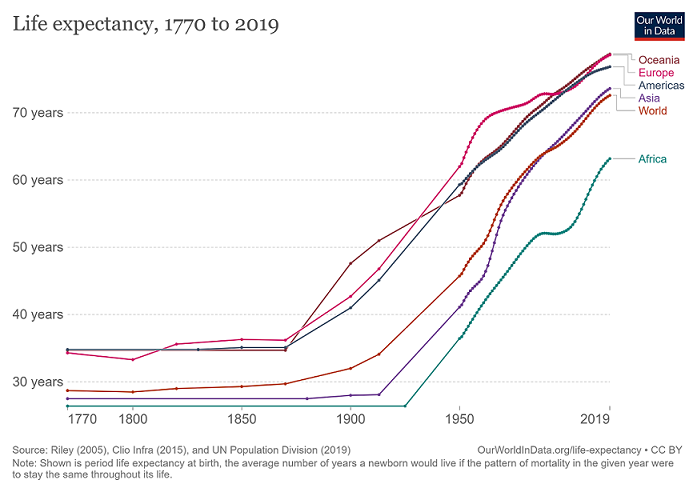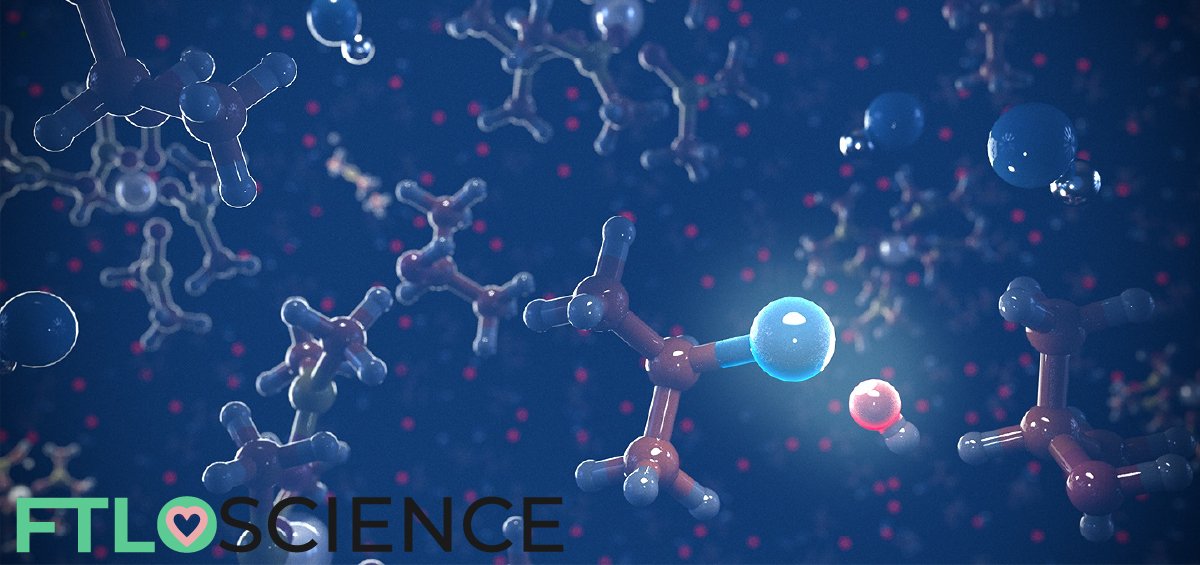Improving human longevity and quality-of-life has always been an important field of scientific research. Access to medicine, healthier lifestyles and proper nutrition have drastically improved life expectancies in the last century, but what if the secret to keeping age-related diseases at bay was hidden in our DNA all along? Scientists have identified the FOXO3 (Forkhead Box O3) gene that directly impacts aging, bringing us closer to understanding the genetics of living longer.
The FOXO3 gene in our DNA codes for a protective protein in our cells that can counteract the effects of many age-related diseases like cancer and heart disease. Five particular mutations in FOXO3 are of interest to researchers, as they have been regularly found in people who live past the age of 95, regardless of their geographical location. This article takes an in-depth look at the genetics of longevity and several exciting studies of FOXO3 in preventing disease.
The Quest for Health and Longevity
Humans have long been intrigued by the concept of living longer, healthier lives; an ancient Mesopotamian poem from 2000 BC depicts a quest for an Elixir of Life granting youth and vigor, while ideas like the Fountain of Youth pop up at different times and places in history—almost like a form of convergent evolution, cultures independently conjure myths of extreme longevity and eternal youth.
Since the turn of the 20th century, modern medicine and a science-based approach to health have drastically improved human lifespans. Once the terrors of human civilization, many diseases have been drastically diminished, with one wholly eradicated. Improvements in sanitation and access to nutritious diets have also contributed to an overall increase in life expectancy worldwide. But what if the true secret to longevity was within us all along, hardwired into our DNA?

The Genetics of Living Longer
Searching Within our DNA
Our DNA contains genes—about 25000 in total—each holding the instructions for making a particular protein; these proteins control all the life-sustaining processes in our body. However, establishing the link between an individual gene to a trait like longevity is almost impossible; genes in our body often work synergistically, with each process controlled by multiple genes. But this didn’t stop researchers from seeking out genes linked to aging and disease.
In humans, specific high-risk genes are linked to an increased susceptibility to heart disease, cancer and type 2 diabetes (conditions associated with aging). Genome-wide association studies (GWAS) were conducted on large populations that, somewhat surprisingly, showed no variation in these genes between long-lived individuals and the general population. Since longevity wasn’t affected by these disease-related genes, scientists believed that a ‘protective’ gene existed; a gene (or genes) that helps individuals live longer by counteracting disease-related factors.
FOXO3—The Longevity Gene
In 2002, a research group in the Netherlands identified a single gene that protected our stem cells from oxidative stress. Oxidative stress has been linked to aging and related diseases. This gene was FOXO3, belonging to a family of FOX (Forkhead Box) genes that produced proteins with the ability to bind to DNA by having a ‘forked’ shape. Using roundworms (C. elegans) as a model organism showed that FOXO3 protected cells from cell death, especially those deprived of glucose; low glucose levels often trigger cell death (apoptosis).

A review paper in 2015 highlighted the direct link between FOXO3 and longevity, presenting the 13 years of research since its discovery. FOXO3 was found to significantly influence many additional cellular processes, including DNA repair and immune response. Subsequent studies went a step further to show that proteins produced by FOXO3 could protect us against type 2 diabetes, cardiovascular diseases, cancers and even neurological disorders—all of which affect aging and life expectancy.
The correlation between FOXO3 and aging was also established at the genetic level. FOXO3 protein levels decreased by 25% in mice as they aged, accelerating processes associated with aging; an increase in lifespan was seen in fruit flies genetically engineered to produce more FOXO3. Researchers also identified five separate mutations in the FOXO3 gene prevalent in people who lived past 95 years old across 11 independent populations worldwide. We finally had an early glimpse into the genetics of living longer, healthier lives.
FOXO3 in Age-Related Diseases
Cancer
There is conflicting information on the role FOXO3 plays in cancers, highlighting the need for more studies in this area. In breast cancer cells treated with the anticancer agent paclitaxel, it was found that the drug worked by increasing FOXO3 levels, which in turn caused cell death of the tumor cells. A similar process was observed in leukemia cells treated with the chemotherapy drug Imatinib.
Tumor cells grow uncontrollably and have high aerobic activity rates, meaning they need sugar and oxygen in large amounts to sustain themselves. This means they are often deprived of sugar in the form of glucose, which forms an environment of high oxidative stress. As mentioned above, FOXO3 protects the tumor cells and prevents cell death in these environments, which could allow tumors to thrive. Conversely, if we could find a way to switch the FOXO3 gene off in cancer cells, it could be a viable strategy for destroying tumor cells through oxidative stress.
Stem Cell Loss
Many diseases are linked to the loss of stem cells, vital cogs in regenerative processes. FOXO3 is responsible for protecting the stem cell pool in mammals, delaying the onset of diseases caused by stem cell loss. These include neurodegenerative diseases (from loss of neural stem cells), heart diseases (cardiosphere-derived cells) and blood disorders (hematopoietic stem cells).
Cardiovascular Disease
Cardiovascular disease is the leading cause of death worldwide. FOXO3 has been shown to protect the heart and blood vessels from inflammation, a key driver of age-related cardiovascular disease; centenarians are known to experience fewer ‘inflammaging’ events. Inflammation also leads to a loss of density and flexibility of blood vessels throughout the body, impairing the circulatory system’s overall function.
LDL (low-density lipoprotein) cholesterol—often labeled ‘bad’ cholesterol for its tendency to build up along the walls of arteries—has long been implicated in cardiovascular disease; 1 in 3 Americans take drugs like Lipitor to lower their levels of LDL. FOXO3 lowers LDL cholesterol through a process that removes the LDL receptor, preventing cells from identifying and absorbing the LDL molecules.
Immune System Dysfunction
The immune system works around the clock, protecting our body from harmful pathogens. As we age, this protection deteriorates, making up more susceptible to infection. FOXO3 directly boosts our immune system by producing antibacterial compounds in our kidneys, lungs and gut. It is also responsible for performing cellular quality control, a vital part of the immune response that removes damaged or malfunctioning cells, stopping their development into more severe conditions (e.g., tumors); this process also becomes less efficient with age.
Applying FOXO3 Research to Improve Life Expectancy
The discovery of FOXO3 and its effects on longevity is truly remarkable—a single gene out of tens of thousands with a direct and significant impact on our body. To date, several compounds have been identified that might increase the production of FOXO3 proteins: astaxanthin (the red pigment found in algae and shrimp), curcumin (from turmeric and ginger) and resveratrol (from green tea). However, at the time of writing, there is no evidence to show that consuming these compounds directly increases longevity.
Although promoting the effects of FOXO3 and related genes might lead to life-extending outcomes, altering our genetic code at the source could be the ultimate key to unlocking exceptionally long lifespans. The rare variations of the FOXO3 gene found in people of extreme longevity provide direction for future gene therapy research, introducing these favorable mutations into the human population. Perhaps one day, we will tell the story of how the Elixir of Youth went from myth to reality by harnessing the power of genetics to live longer, healthier lives.
About the Author

Sean is a consultant for clients in the pharmaceutical industry and is an associate lecturer at La Trobe University, where unfortunate undergrads are subject to his ramblings on chemistry and pharmacology.




